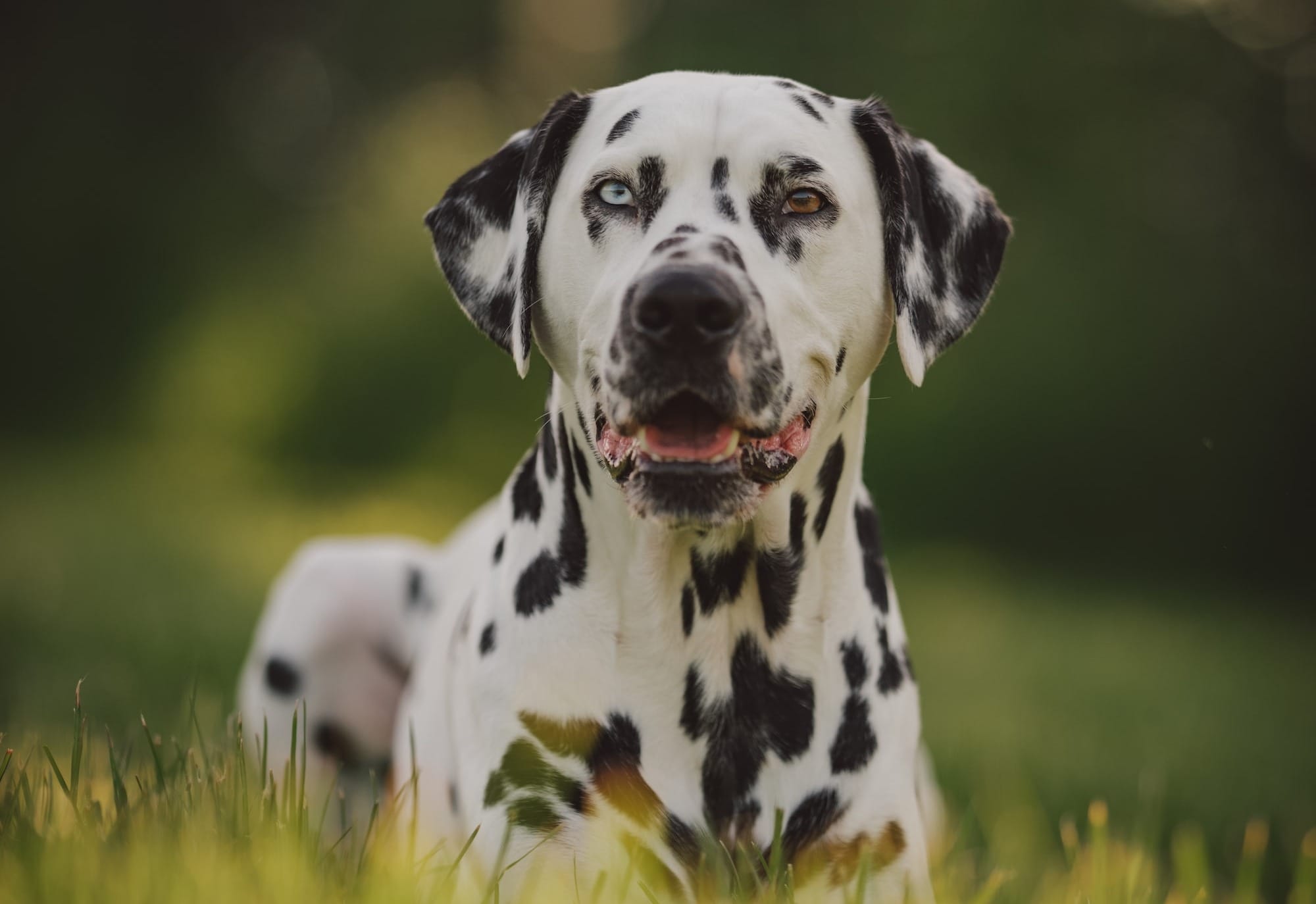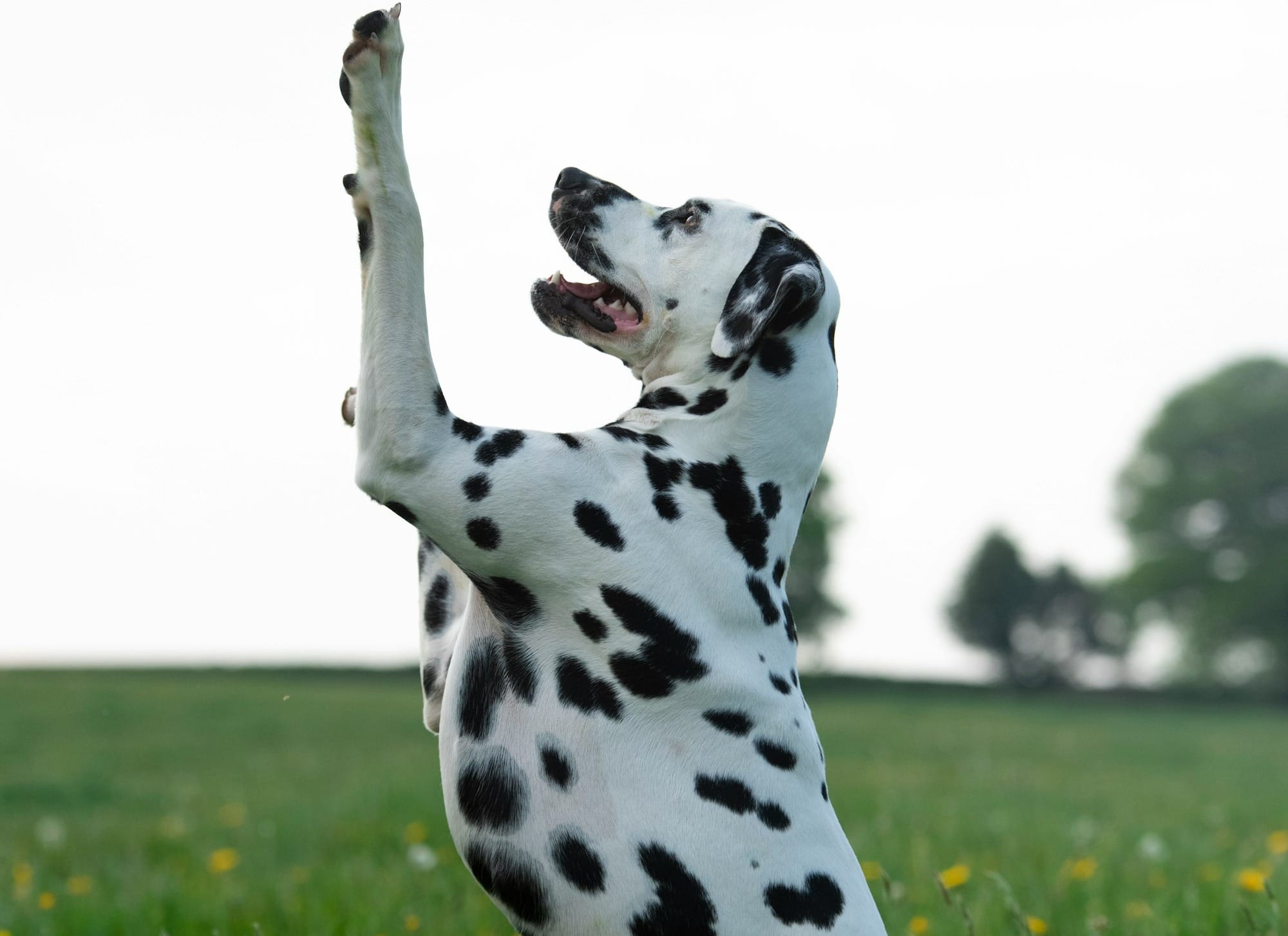The Dalmatian, a breed as distinct as its iconic spotted coat, has captivated hearts for centuries. Originating from a region once known as Dalmatia (modern-day Croatia), these elegant dogs are famed for their unique black or liver spots on a gleaming white background. Historically, Dalmatians have served in a variety of roles, from noble companions to carriage dogs, and even mascots in firehouses. Despite their well-documented history and versatile nature, several myths persist about their rarity and uniqueness.
This article aims to debunk these misconceptions, shedding light on the true nature of this beloved breed. We will explore the genetic roots of their distinctive spots, confront misconceptions about their population status, and reveal the multifaceted roles Dalmatians play beyond being show dogs. Join us as we uncover the truths behind the Dalmatian's perceived rarity, ensuring these graceful dogs are understood and appreciated in their full, factual glory.

The Origin and Historical Significance of Dalmatians
The Dalmatian, with its distinctive spotted coat and noble stature, has a history as colorful as its appearance. The breed's origins trace back to the region of Dalmatia in the Republic of Venice (now part of Croatia), where the earliest known depictions date back to the 1600s. These dogs were bred for their stamina, intelligence, and distinctive looks, making them ideal companions for long journeys.
In the 18th century, Dalmatians became synonymous with horse-drawn carriages. Their affinity for horses and ability to clear paths made them invaluable as carriage dogs. They were used to guard the horses and coaches, and their presence was considered a status symbol among the aristocracy in England and Europe. This role extended to firehouses when horse-drawn fire engines were the norm. Dalmatians’ compatibility with horses ensured a calm and orderly team en route to fire scenes, and their loud barks served as an early warning system. The tradition of Dalmatians in firehouses persists symbolically even today in many parts of the world.
Beyond their utility roles, Dalmatians were also favored as hunting dogs and, in wartime, as sentinel dogs. They possess a unique blend of endurance, speed, and intelligence, qualities that made them versatile in various roles throughout history. Dalmatians were not just working dogs; they also became beloved companions, known for their loyalty and affectionate nature.
This rich history challenges the notion of Dalmatians as merely ornamental or rare. Their journey through time reflects adaptability and service, marking them as a breed not just of physical beauty but of significant utility and historical importance.
Debunking Myth 1: Unique Spots and Rarity
A common myth surrounding Dalmatians is that their unique spotted coat is a marker of rarity. This misconception can be clarified by understanding the genetic basis of their distinctive spots and comparing their characteristics with other breeds.
The spots of a Dalmatian are the result of a genetic trait known as the 'ticking gene.' This gene causes pigmented spots to develop on the dog's coat over a white base. The spots are usually black or liver-colored, and they start appearing when the puppy is about two weeks old, continuing to develop as the dog grows. These spots are a result of a mutation in the gene that controls pigmentation. The pattern and size of the spots can vary, but the genetic process is consistent among all Dalmatians.
Contrary to the belief that such a unique trait makes them rare, genetics shows that similar patterns occur in other breeds. For instance, the English Setter also displays a ticking pattern, albeit with a different distribution. The Australian Cattle Dog and the German Shorthaired Pointer also exhibit similar ticking patterns. This shows that while the Dalmatian's spots are unique in their presentation, the genetic mechanism behind them is not exclusive to the breed.
Moreover, the concept of rarity in the animal kingdom is typically linked to population numbers or unique genetic traits that are isolated to a specific species or breed. While Dalmatians are unique in their appearance, their population numbers are healthy, and their genetic makeup, particularly concerning the ticking gene, is not an isolated phenomenon.
In reality, the perceived rarity of Dalmatians is more a testament to their distinct appearance rather than an indicator of their genetic uniqueness or population scarcity. Their spotted coat is certainly unique in its specific pattern and distribution, but it is a result of genetic factors common in the canine world. Thus, the myth of their rarity due to their spots does not hold up under genetic scrutiny.

Debunking Myth 2: Misconceptions about Endangerment
The second myth surrounding Dalmatians is the misconception of their endangerment. While Dalmatians are distinct in appearance, their global population and breed status do not qualify them as endangered or even rare. Understanding the difference between the terms 'rare' and 'endangered' is crucial in debunking this myth.
The term 'endangered' refers to species that are at risk of extinction across all or a significant portion of their range. This status is often determined by factors like declining population numbers, loss of habitat, or changes in the environment. 'Rare,' on the other hand, typically describes something that is uncommon or not found in large numbers, but not necessarily at risk of extinction.
Dalmatians, in their current global status, do not fall into either of these categories. According to major kennel clubs and breed registries, the Dalmatian breed has a robust and stable population. They are popular and widely bred in many countries, including the United States, United Kingdom, and various parts of Europe. This popularity surged especially after the release of movies featuring the breed, leading to an increase in their numbers.
While Dalmatians may have specific health concerns, such as deafness and urinary stones, which breeders work to mitigate through responsible breeding practices, these issues do not threaten the breed with extinction. In fact, with advances in veterinary medicine and responsible breeding, the overall health and longevity of the breed have improved.
Moreover, the widespread presence of Dalmatian breed clubs and rescue organizations around the world further supports the healthy population of the breed. These organizations are dedicated to the welfare and promotion of Dalmatians, ensuring they are neither rare nor endangered.
The notion of Dalmatians being endangered is a misconception. While their unique appearance may give an impression of rarity, the global population and breed status of Dalmatians indicate a thriving and well-established breed, far from the brink of endangerment.
Debunking Myth 3: Beyond Show Dogs
The third myth surrounding Dalmatians paints them as mere show dogs, celebrated only for their distinctive appearance. However, the reality is far more diverse. Dalmatians possess a range of qualities that extend well beyond the show ring, underscoring their versatility and utility in various roles.
Originally bred as coach dogs, Dalmatians have a long history of working alongside humans in various capacities. Their role as carriage dogs is well-documented, where they ran alongside or under horse-drawn carriages, offering protection and companionship. This historical role required more than just a striking appearance; it demanded intelligence, endurance, and an instinctive understanding of horses.
In modern times, the utility of Dalmatians goes beyond historical roles. They are known for their high energy levels and intelligence, making them excellent candidates for dog sports like agility, flyball, and obedience competitions. Their endurance also makes them great companions for long-distance runners and outdoor enthusiasts.
Moreover, Dalmatians have served in roles that demand courage and steadfastness. Their history as firehouse dogs, where they cleared paths for fire carts and calmed the horses, is a testament to their bravery and utility. Today, while they may no longer perform these specific roles, the legacy continues in a more symbolic manner in fire stations across the world.
In addition to these roles, Dalmatians are also cherished as therapy and service dogs. Their gentle temperament and intuitive nature make them excellent companions for emotional support and assistance tasks. They bond strongly with their human families, demonstrating loyalty and affection that transcends the show dog stereotype.
Contrary to the narrow view of them as show dogs, Dalmatians are multifaceted animals with a rich history of service and companionship. Their roles throughout history and in contemporary times highlight their capabilities beyond just aesthetics, debunking the myth of them being valued solely for their appearance in dog shows.

Health, Breeding, and Perceived Rarity
The perception of rarity in Dalmatians is often linked to misconceptions about their health and breeding. While Dalmatians do have some breed-specific health concerns, understanding these issues and how they are managed through responsible breeding practices is essential to dispel myths about their rarity.
One of the most notable health concerns in Dalmatians is their predisposition to deafness. Studies indicate a significant percentage of Dalmatians are born with some degree of hearing loss. This is linked to the genetic makeup that gives them their unique coat pattern. Responsible breeders conduct hearing tests on puppies and use selective breeding practices to reduce the incidence of deafness in the breed. These efforts ensure that the population of healthy, hearing Dalmatians remains robust.
Another health issue specific to Dalmatians is their tendency to form urinary stones, due to a unique uric acid metabolism. Again, through careful diet management and selective breeding, breeders and owners can significantly mitigate this risk, ensuring the long-term health and wellbeing of the breed.
It's important to note that these health concerns do not make Dalmatians rare. In fact, the breed's popularity has led to a wide genetic pool, which, when managed responsibly, can help reduce the prevalence of these issues. The perception of rarity due to health concerns is thus more a reflection of the need for informed breeding and care rather than an actual scarcity of the breed.
Moreover, the Dalmatian's historical roles and their adaptability have ensured a consistent demand and interest in the breed. This ongoing interest has contributed to a stable and healthy population worldwide. The concerted efforts of breed enthusiasts, clubs, and ethical breeders continue to promote the health and welfare of Dalmatians, ensuring their sustainability as a breed.
While Dalmatians have specific health considerations, these do not contribute to their rarity. Through responsible breeding and care, Dalmatians continue to be a popular and thriving breed, far from being rare or endangered.
Media Influence and Public Perception
The Dalmatian breed has experienced a unique intersection with media, profoundly influencing public perception and popularity. Iconic films such as Disney's "101 Dalmatians" have catapulted these dogs into the limelight, showcasing their striking appearance and endearing personalities. This portrayal significantly boosted the breed's popularity, leading to a surge in demand for Dalmatian puppies following the film's release. Families, enamored by the charming depiction of these spotted dogs, rushed to bring a piece of the magic into their homes.
However, this media-driven popularity surge has had unintended real-world consequences. The portrayal of Dalmatians in media often omits the reality of their high energy levels and need for consistent training and exercise. As a result, many new Dalmatian owners, unprepared for the breed's demands, found themselves overwhelmed. This led to an increase in Dalmatians being relinquished to shelters when owners were unable to meet their needs.
This phenomenon underscores a critical issue: the power of media in shaping breed trends and public perception can lead to impulsive pet adoption decisions. It highlights the need for prospective pet owners to research and understand a breed's characteristics and requirements fully, beyond their portrayal in media. Responsible breeders and animal welfare organizations have since emphasized the importance of education and suitability in pet ownership, striving to ensure Dalmatians find homes equipped to handle their distinctive needs.
The Current State of Dalmatians Worldwide
Globally, the Dalmatian breed enjoys a widespread presence and accessibility, countering any notion of them being rare. They are well-established in continents such as North America, Europe, and Australia, with a notable presence in Asia and South America as well. Kennel clubs and breed registries around the world report stable numbers, reflecting their enduring popularity.
Dalmatians are readily available through reputable breeders who prioritize health and temperament, as well as through rescue organizations dedicated to rehoming those in need. This worldwide distribution and availability underscore the breed's enduring appeal and refute any misconceptions about their rarity on a global scale.

Conclusion
In conclusion, this exploration into the Dalmatian breed has debunked several myths, revealing a breed that is neither rare nor endangered, but rather widespread and cherished globally. Their unique spots are a result of genetics shared with other breeds, and their popularity remains strong, unaffected by health concerns thanks to responsible breeding. Media portrayals have influenced their popularity, highlighting the need for informed pet ownership. Ultimately, understanding the Dalmatian's true nature and needs is crucial. Prospective and current owners should commit to responsible care, ensuring these elegant and historical dogs continue to thrive in suitable, loving environments.
FAQs
- Are Dalmatians a rare breed?
- No, Dalmatians are not a rare breed. They are widely distributed globally and are popular in many countries. Their unique spotted coat is genetically common in canines and does not signify rarity.
- What is the origin of the Dalmatian breed?
- Dalmatians originated from a region known as Dalmatia, in modern-day Croatia. They have a long history dating back to the 1600s and were historically used as carriage dogs due to their endurance and distinctive appearance.
- Is it true that Dalmatians are only suitable as show dogs?
- No, this is a myth. Dalmatians are versatile and have served in various roles, including as carriage dogs, firehouse dogs, and even as hunting and sentinel dogs. They are also popular in dog sports and as family pets.
- Do Dalmatians have specific health issues?
- Dalmatians are prone to certain health issues, such as deafness and urinary stones. However, responsible breeding practices and proper care can mitigate these risks, ensuring the health and well-being of the breed.
- How did films and media affect the Dalmatian breed?
- Films like "101 Dalmatians" significantly increased the breed's popularity. However, this often led to impulsive adoptions by people unprepared for the breed's needs, resulting in many Dalmatians being relinquished to shelters.
- What should potential owners know before getting a Dalmatian?
- Potential owners should understand that Dalmatians are energetic and require regular exercise and mental stimulation. They should also be prepared for the breed's specific health needs and commit to responsible pet ownership.
- How can one responsibly acquire a Dalmatian?
- To responsibly acquire a Dalmatian, one should research and connect with reputable breeders or consider adopting from rescue organizations. It's important to ensure the source follows ethical breeding practices and prioritizes the health and temperament of the dogs.